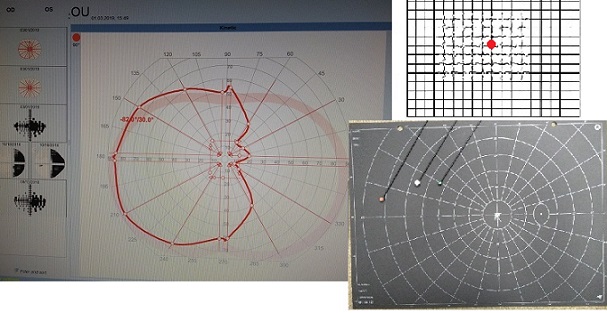How does one define vision loss?
To most, it means to have a decrease in vision, or to not be able to see as clearly as one once had. Vision loss can also be with a person has lost parts of their visual field which in turn makes them unable to process information as a whole picture due to information missing from that area. Some patients can experience vision loss due to an eye disease, but others can also have loss from a a stroke or other traumas to the brain. When patients have acquired visual field loss, they might not always notice it. Family members may report patient behaviors such as, bumping into things, not finishing food on one side of their plate, or needing to turn the head to see the picture on their large TVs. Avid readers may find it difficult to understand what they are reading sometimes due to skipping lines or missing key words that make a sentence not make much sense. Some patients experience a spatial shift so large that others may notice them veering off to one side while attempting to walk straight.How Do We Test Visual Fields?
There are many ways we can map out a visual field. For patients with macular degeneration, for example, we can use something as simple as an Amsler grid. A patient looks at the dot center of the amsler grid and makes note of any areas of the grid that are distorted or missing. We also have access to kinetic color field testing at our office that tests visual field and allows mapping of the blind spot using small moving color targets controlled by hand. Automated testing using a special computerized visual testing unit can help characterize field loss (location and sensitivity) and field awareness and track these changes over time.What does a Visual field Testing tell us?
Visual field testing can help the doctor understand where the problem is. There are certain patterns of visual field loss associated with a retina problem versus a brain problem. Dr. Ho uses the results to understand how patients are functioning and sometimes what type of glasses design to use (or not use).
The brain craves constant and consistent input from the visual system. With visual field loss, there is less information or information may be confusing altogether. The field loss may disrupt the patient’s own ‘egocentric’ referencing point through which that patient makes all spatial judgements from. Patients are often told that there is nothing more that can be done. While these visual field losses usually remain stable, there are different strategies that can be taught through vision rehabilitation to allow for patients to compensate well and re-establish visual orientation.
For example: a patient with a central missing spot can change how he/she uses his or her eye movements to enable him/her to be able to read. Another example is the use of prism glasses to help realign spatial shifts. Through professional guidance from a vision rehabilitation and low vision specialist and repeated practice, patients can develop full awareness of deficient visual skills and develop compensations to help them function once more. In our office, it is always exciting and rewarding to hear the stories of these hardworking patients who return to doing things they enjoy and improving their quality of life.
This was a blog post from our patient care coordinator Linda.

